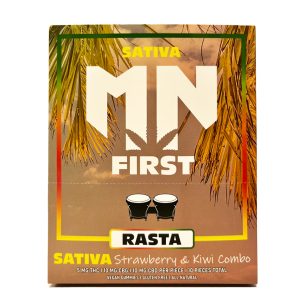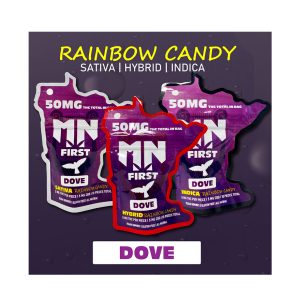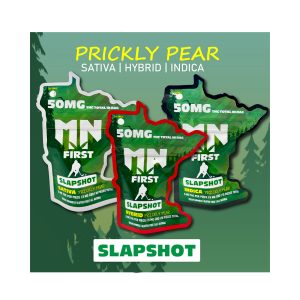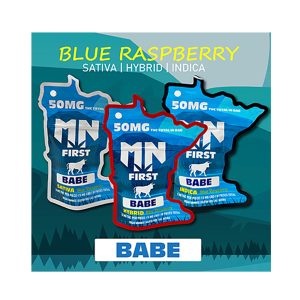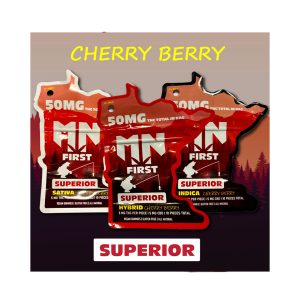**Strawberry Cultivation and Production:**
– Garden strawberry first bred in Brittany, France in the 1750s
– Cultivars of Fragaria ananassa replaced woodland strawberry in commercial production
– Demand for strawberry farming increased in England by the mid-16th century
– Europeans discovered sexual reproduction of strawberries in the 18th century
– Modern varieties of strawberries cultivated from F. ananassa hybrids
– Proper cultivation practices are essential for high-quality strawberry yields
– Biotechnology plays a role in improving strawberry cultivation techniques
– Different cultivars of strawberries are grown worldwide
– Historical texts have documented methods for growing strawberries
– Production quantity of strawberries is tracked by organizations like the UN FAO
**Strawberry Composition and Uses:**
– Raw strawberries are 91% water, 8% carbohydrates, 1% protein
– Rich source of vitamin C and manganese
– Garden strawberries contain ellagitannin agrimoniin and flavonoids
– Strawberries can be frozen, made into jam, preserves, or dried
– Popular addition to dairy products and desserts worldwide
– Research shows three basic flowering habits: short-day, long-day, and day-neutral
– Average strawberry has about 200 seeds on its external membrane
– Strawberries are marketed as a source of happiness for consumers
– Popular strawberry cultivars include Cambridge Favourite and Hapil
– Culinary articles and reports highlight the versatility and popularity of strawberries
**Strawberry Genetics and Color:**
– Modern strawberries are octoploid
– Pelargonidin-3-glucoside is the major anthocyanin in strawberries
– Cyanidin-3-glucoside is found in smaller proportions
– Strawberry genome sequence published in 2019
– Glucose is the most common substituting sugar in strawberry anthocyanins
– Purple minor pigments consist of dimeric anthocyanins in strawberries
– Furaneol is an important component of strawberry fragrance
– Emphasis in breeding on sugars, acids, and volatile compounds
– Esters, terpenes, and furans are key chemical compounds for flavor
**Strawberry Allergy and Health Benefits:**
– Some people experience anaphylactoid reactions to strawberries
– Allergen linked to a protein named Fra a1
– Regular consumption of strawberries may have positive impacts on human health
– Strawberries are rich in ellagitannins, which have antioxidant properties
– Fisetin, a compound found in strawberries, is known for its health-promoting effects
– Studies have investigated the chemistry and impact of strawberry allergies
– Allergies to strawberries can be a concern for some individuals
**Strawberry Production Techniques and Challenges:**
– China leads in strawberry production followed by the United States and Turkey
– Approximately 35% of the US crop was spoiled in 2020
– Propagation from runners in commercial production
– Yields are typically lower than in plasticulture
– Compost socks can enhance production of flavonoids, anthocyanins, and various acids in strawberries
– Most strawberry plants are fertilized with artificial fertilizers
– Cover crops like wheat or rye are planted for organic matter
– Around 200 pest species can attack strawberries
– Strawberry is on EWG’s Dirty Dozen list due to pesticide use
– Berries are harvested every other day with caps and stems intact
The garden strawberry (or simply strawberry; Fragaria × ananassa) is a widely grown hybrid species of the genus Fragaria, collectively known as the strawberries, which are cultivated worldwide for their fruit. The fruit is widely appreciated for its characteristic aroma, bright red color, juicy texture, and sweetness. It is consumed in large quantities, either fresh or in such prepared foods as jam, juice, pies, ice cream, milkshakes, and chocolates. Artificial strawberry flavorings and aromas are also widely used in products such as candy, soap, lip gloss, perfume, and many others.
| Strawberry Fragaria × ananassa | |
|---|---|
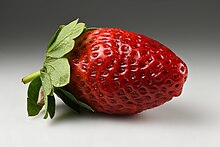
| |
| Strawberry fruit | |

| |
| Halved strawberry | |
| Scientific classification | |
| Kingdom: | Plantae |
| Clade: | Tracheophytes |
| Clade: | Angiosperms |
| Clade: | Eudicots |
| Clade: | Rosids |
| Order: | Rosales |
| Family: | Rosaceae |
| Genus: | Fragaria |
| Species: | F. × ananassa
|
| Binomial name | |
| Fragaria × ananassa | |
The garden strawberry was first bred in Brittany, France, in the 1750s via a cross of Fragaria virginiana from eastern North America and Fragaria chiloensis, which was brought from Chile by Amédée-François Frézier in 1714. Cultivars of Fragaria × ananassa have replaced, in commercial production, the woodland strawberry (Fragaria vesca), which was the first strawberry species cultivated in the early 17th century.
From a botanical point of view, the strawberry is not a berry but an aggregate accessory fruit, meaning that the fleshy part is derived not from the plant's ovaries but from the receptacle that holds the ovaries. Each apparent "seed" (achene) on the outside of the fruit is actually one of the ovaries of the flower, with a seed inside it.
In 2019, world production of strawberries was nine million tons, led by China with 40% of the total.
English
Etymology
From Middle English strawbery, strauberi, from Old English strēawberġe, corresponding to straw + berry.

